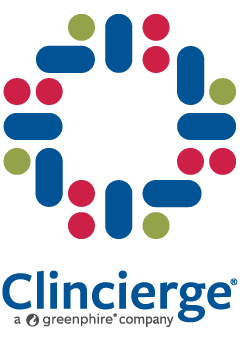Improving Awareness, Patient Diversity, and Access in Rare Disease Clinical Trials
Members of ethnic communities around the globe suffer from rare diseases unique to their demographic group. Their genetic makeup makes them more susceptible to hereditary issues which affect generation after generation. Designing a trial and selecting participants with diverse backgrounds that proportionally represent each demographic group is one of the first steps a sponsor can take to create a diverse and inclusive clinical trial. The benefits of understanding the cultural and genetic nuances of each group and mitigating any adverse effects of these new drugs may result in a safer and more effective treatment for both the trial participants and the greater world population.
The month of October plays host to several heritage months in the United States, honoring the unique cultural traditions and celebrations these groups bring with them to a new country and raising awareness of the rare diseases that impact their specific populations. October is Filipino-American Heritage Month, Italian-American Heritage Month, German-American Heritage Month, and Polish-American Heritage Month. Below we explore the background of each culture and some of the rare diseases that affect each group.
Filipino-American Heritage Month
Established in 1988 by the Filipino American National Historical Society, October serves as a month to remember the contributions of Filipinos in the United States. Filipinos were the first Asians to arrive in America, with their arrival dating back to 1857. Today, Filipino Americans account for 1 in every 5 Asian Americans, equating to the second largest group.
Filipino Americans were vital to the American Labor Movement, and their contributions were especially valuable to the United Farm Workers Movement of the 1960s.
Filipino Americans have expressed their frustration over racism throughout the years, often misperceived as part of other racial groups due to their darker skin. Many individuals within this community report being referred to as “not Asian enough” by various ethnic groups, while some identify more with Black or LatinX groups.
While there are many Filipino Americans who have contributed significantly to American society, here are a few of note:
- de.ap – part of the musical group The Black Eyed Peas; born Allan Pineda in Pampanga, he is fluent in both Tagalog and Kapampangan
- Darren Criss – actor; his mother is from Cebu, and he has relatives in Manila
- Manny Pacquaio – boxer; the only eight-division world champion, he was recently elected as a Senator of the Philippines
Individuals of Filipino descent are more susceptible to Gaucher disease (GD), a rare genetic lysosomal storage disorder characterized by a missing enzyme needed to break down lipids in the body. There are three types of GD, with Gaucher disease type 3 being the most prevalent in those of Filipino background.
Another rare disorder, X-linked dystonia-parkinsonism, has only been found in those of Filipino descent. This neurodegenerative movement disorder occurs more often in males, and female carriers are usually asymptomatic. All of the 500 known cases were discovered in the Philippines, and in the worst cases, patients are bedridden within 24 months of disease onset.
Italian-American Heritage Month
In 1989, the US Congress and then-President George H.W. Bush first proclaimed October as a month to celebrate the achievements of Italians in America. The month-long celebration was set to coincide with Columbus Day, celebrated on the second Monday of the month. The first Italian immigrant entered the US in 1880, and their descendants make up the fifth largest ethnic group in America today.
Again, while there are so many Italian Americans who have contributed to American society, below are a few notable individuals:
- Yogi Berra – baseball player; also well-known for his many witty comments known as “Yogi-isms” like “It’s déjà vu all over again.”
- Sonny Bono – singer-songwriter; he became a politician later in life, first as Mayor of Palm Springs, then as a Congressman for the State of California
- Frank Sinatra – singer; one of the greatest crooners in history, he was born in Hoboken, New Jersey, to Italian immigrant parents
Among those of Italian ancestry, there is an increased prevalence of Noonan syndrome. This rare genetic disorder is multisystemic and often characterized by short stature, developmental delays, and heart defects.
Turner syndrome is another rare chromosomal disorder affecting females in increased numbers for those of Italian ancestry. Symptoms of this disease include short stature and premature ovarian failure, with many patients never reaching puberty and most becoming infertile. As with Noonan syndrome, health issues can vary significantly between patients and can include multiple organ abnormalities.
German-American Heritage Month
In 1987, October was proclaimed German-American Heritage Month by This celebration commemorates the founding of the settlement known as Germantown, Pennsylvania, in October 1683. Today, over 15% of the US population are of German descent, making this the largest ethnic group in America.
Listed below are several of the many influential German Americans who have contributed immensely to American society:
- John Jacob Astor – businessman; born in Germany, he arrived in the US in 1783 and became the first multi-millionaire
- Albert Einstein – physicist; born in Germany, he immigrated to the US in 1932 after living in Italy and Switzerland
- John Steinbeck – author; writer of over 25 books, he is best known for the novel “The Grapes of Wrath,” winner of the Pulitzer Prize
For individuals of German descent, epidermolysis bullosa (EB) is very prominent. This rare genetic connective tissue disorder causes extremely fragile skin that is prone to blisters and tears. There are four major types of EB —EB simplex (EBS), junctional EB (JEB), dystrophic EB (DEB), and Kindler. Currently, 2,000 people have been diagnosed with EB in Germany, with others of German descent diagnosed around the globe.
Polish-American Heritage Month
In 1986, the US Congress and then-president Ronald Reagan deemed October as Polish-American Heritage Month, moving the celebration from the original month of August, set in 1984. The first Polish settlers arrived in Jamestown, Virginia, in 1608. Today, Polish-Americans make up the eighth largest group overall in the United States.
Here are a few of the many Polish Americans who have contributed significantly to American society over the years:
- Pat Benatar – musician; born Patricia Mae Andrzejewski, she has won 4 Grammy Awards and has multiple Platinum albums
- Mika Brzezinski – journalist; MSNBC host and daughter of Polish-born former National Security Advisor for President Jimmy Carter, Zbigniew Brzezinski
- Tara Lipinski – figure skater; this 1998 Olympian is now a sports commentator, and all 4 of her grandparents were born in Poland
Among those of Polish descent, the rare genetic muscle disorder known as Duchenne muscular dystrophy (DMD) occurs in extremely high numbers. One out of every 3,000 live-born boys in Poland is diagnosed with this degenerative disease, and with no current cure, most die before they reach the age of 20.
Huntington’s disease is another rare inherited disorder prevalent to the Polish population. This degenerative disease breaks down nerve cells in the brain, seriously impacting an individual’s motor skills and cognitive functions. This debilitating disease most often presents later in life, usually when a patient is in their 30s or 40s.
Actionable Steps to Create Diverse and Inclusive Clinical Trials
There are several key takeaways in understanding individual cultural nuances to create diverse and inclusive clinical trials:
- Grassroots communication efforts are needed to educate these tightly knit local communities.
- Outreach efforts are most effective when using trusted local community members like ministers and community group leaders to share clinical trial information.
- Involving local physicians within these communities who are familiar with specific demographic populations and their diseases is imperative.
- Ensuring an accurate representation of demographic groups in potential participant pools will benefit everyone involved – pharmaceutical companies, study sponsors, clinical trial participants, and future patients worldwide.
- Adhering to Food and Drug Administration (FDA) guidance on creating diverse clinical trials is vital for many reasons, including the accurate representation of unique demographic groups.
In conclusion, understanding individual patient populations’ cultural and genetic nuances is essential to successful clinical trial outcomes. Creating safe and effective treatments is a top priority for all stakeholders involved in the clinical trial process. However, it is the individual receiving the treatment, and future recipients, who will most directly benefit from the success of the research. Often, ethnic populations affected by rare diseases are concentrated in remote global locations, meaning the barriers to trial participation are even more significant for them. Utilizing patient logistics management services enhances recruitment strategies by removing participation barriers and expanding access to clinical trials. Having a patient coordinator local to the patient, who understands their culture and their individual needs, provides an added layer of support to ensure completion of the clinical trial and improve retention.
Patient diversity in clinical trials is an ongoing effort across the industry. Each stakeholder is responsible for ensuring the safety of both the trial process and the resulting treatment for all involved. Clincierge aligns our services to support the needs of diverse populations. For us, this commitment to diversity begins at home. Clincierge fosters diversity, equity, and inclusion in all aspects of our company culture, and our Diversity, Equity, and Inclusion Committee continue to create opportunities for education and celebration.


